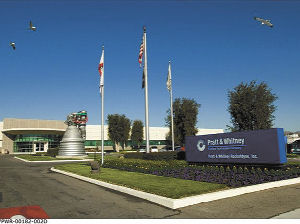Pratt & Whitney Rocketdyne has been a fixture in the local manufacturing scene, acting as a major employer and bringing innovations to aerospace and other industries. The Canoga Park-based company has been manufacturing jet and shuttle technology for more than 50 years. The engine maker is the second-largest employer in the San Fernando Valley region with about 2,000 employed at its two local sites, which serve as its headquarters. There are about 3,000 employees companywide. The employees largely consist of engineers, manufacturers and quality control workers, said John Vilja, the company’s vice president of strategy, innovation and growth. And its executives say its local reach goes beyond its full-time employees. “We also have lots of subcontractors located around the Valley,” Vilja said. “So, we work with a lot of the local businesses to try and do that and foster a lot of business in the area.” Pratt & Whitney Rocketdyne, a subsidiary of Connecticut-based United Technologies Corp., has had various owners in its lifetime, Vilja said. It started out as a division of North American Aviation testing rockets near LAX airport. When the division became large enough, it opened the Santa Susana field laboratory in the 1950s, which is now owned by Boeing. Further expansion led the division named Rocketdyne to move to Canoga Park. In 1967, North American Aviation merged with Rockwell Corporation, becoming North American Rockwell and then Rockwell International. In 1996, the merged company sold its aviation assets to Boeing. In 2005, Boeing sold Rocketdyne to Pratt & Whitney though it kept the Santa Susana field laboratory. Through that time, Rocketdyne has also seen its share of business ventures. The company was particularly active in the 1960s with the government’s Apollo program that sent astronauts to the moon, making shuttle engines and engines for intercontinental missiles. However, the company was forced to evolve when the NASA program started to shut down in the 1970s. “We won the contract to build the Space Shuttle engine, and in the meantime we were also looking at alternative markets where we could apply our technology,” Vilja said. The company looked into things like the development of gasification systems – or systems that convert coal to cleaner energy – and water jets. It ultimately sold off its water jet technology to jet ski maker Kawasaki Motors Corp. • Headquarters: Canoga Park • Founded: 1955 • Joined Pratt & Whitney: 2005 • No. of Employees: About 3,000 • No. of Local Employees: About 2,000 • No. of Local Sites: 2 • Core of Business: Rocket and shuttle propulsion Power generation Rocketdyne started working in power generation in the 1980s. During that time, it also started developing chemical lasers, a business sector that eventually spun off from Rocketdyne as a Boeing division. Rocketdyne is currently working on developments for its upper stage J-2X engine, a hydrogen-oxygen Earth-departure engine. The engine was slated to be included as part of the government’s Constellation Program, which was cancelled last year. However, Vilja said the engines can still be applied to most heavy-lift launch systems, which have been considered potential candidates for NASA’s next generational launcher. “If NASA decides to change its direction and not go for a heavy-lift launch vehicle, the J-2X may not continue,” Vilja said. “However, they’re still going to need a liquid first-stage engine, and we have several engines that would be a good candidate for that.” As the Space Shuttle is expected to retire in June, Rocketdyne and other suppliers in the aerospace industry are at a standstill as they wait for NASA’s final announcement about what direction it will take with its space program. Downsizing As Rocketdyne deals with new developments in the aerospace industry, it is also slated for some major changes in-house. The company is preparing to close its Canoga Park location, sell the land and consolidate that factory’s operations with its location at De Soto Avenue and Nordhoff Street in the next few years. Employees that were previously working out of the Canoga Park site would relocate to Northridge. “That’s a reflection of the fact that the amount of engine purchases have gone down, so we don’t need the two factories,” Vilja said. “We’ve built a modern facility here, and now we’re going to consolidate and just build our engines here.” The move is currently being targeted for 2013 or 2014. The company is currently determining a plan for how to finance and best coordinate the move.
